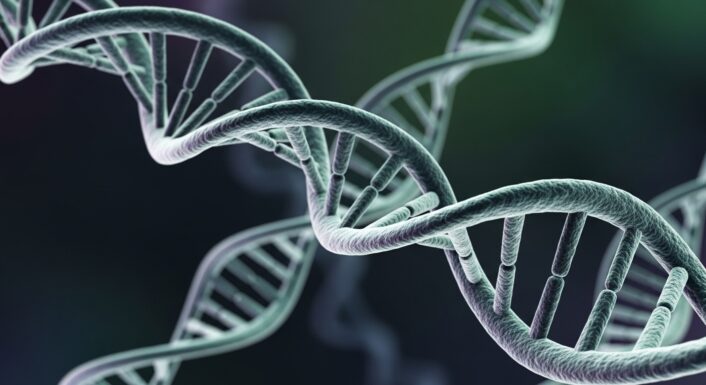

Disclaimer: This article is for informational purposes only and is not intended to diagnose any conditions. LifeDNA does not provide diagnostic services for any conditions mentioned in this or any other article.
Our bodies are constantly exposed to harmful substances in the environment, from pesticides to pollution. Fortunately, we have natural defense systems designed to protect us from these toxins. One of these defenders is a gene called PON1, which produces an enzyme that plays a key role in detoxifying specific chemicals.
An enzyme is a type of protein that speeds up chemical reactions in the body. Think of enzymes as tiny helpers that keep biological processes running efficiently. In the case of PON1, the enzyme helps break down toxic substances into safer forms that the body can eliminate. However, not everyone has the same versions or amounts of this enzyme. These differences may affect how well your body handles toxic exposures.
Understanding how the PON1 enzyme works and how much of it your body makes, may offer insight into your ability to detox harmful chemicals. Some people inherit a more efficient version of the PON1 gene, while others may produce a less active form. This helps explain why some individuals are more sensitive to environmental toxins.
You may want to read: The Role of Genetic Variations in Mercury Detoxification
PON1 gene codes for Paraoxonase 1, is an enzyme made in the liver and found in the blood attached to the HDL molecule known as the “good” cholesterol.
High-density lipoprotein (HDL) exhibits cardio- and neuro-protective properties, which are thought to be promoted by PON1. Reduced levels of PON1 activity, characterized biochemically by elevated levels of homocysteine (Hcy)-thiolactone, oxidized lipids, and proteins modified by these metabolites, are associated with pathological abnormalities affecting the cardiovascular system (atherothrombosis) and the central nervous system (cognitive impairment and Alzheimer’s disease).
In addition to its role in cardiovascular and nervous system diseases by protecting the body from damage caused by oxidized fats, PON1 has many other antioxidant and detoxifying properties and can use several different substrates via its different types of enzyme activities (lactonase, arylesterase, aryldialkylphosphatase/paraoxogenase). PON1 helps break down harmful chemicals, particularly organophosphates or OPs, a group of compounds commonly found in pesticides and nerve agents.
PON1 works alongside another group of enzymes called cytochrome P450, and together they convert harmful compounds, especially organophosphates—into less toxic forms the body can remove. Some of the key environmental harmful substances PON1 helps neutralize include:
PON1 is especially active in the liver and blood, which are the body’s primary detoxification centers. The enzyme’s ability to break down these substances plays a critical role in protecting the nervous system and reducing toxic buildup.
A study from California examined how people’s genes affect their ability to handle certain pesticides and what that means for their health. Researchers focused on PON1, the gene that helps break down chemicals like chlorpyrifos and diazinon, both widely used in agriculture.
They found that people living near farms that were using these pesticides were more likely to develop Parkinson’s disease if they had a version of the PON1 gene version called PON1-55 MM (variant L55M, SNP rs854560 genotype TT). This version produces less enzyme, reducing the body’s ability to detox these chemicals. The risk was even higher for individuals under 60, suggesting that early-life exposure may play a bigger role. Interestingly, there was no strong link between this PON1 variantand another pesticide called parathion, possibly because the body metabolizes it using other enzymes or other PON1 enzyme activities not affected by this SNP.
This study shows that not everyone is equally protected from toxins. People with a less effective version of the PON1 gene may accumulate more harmful chemicals over time, increasing the risk of developing diseases like Parkinson’s.
It’s a reminder that our genes and environment interact. For some individuals, living near farms or working with pesticides could be much more dangerous due to differences in how their detox system functions.
In another study, researchers examined 27 individuals who could detoxify pesticide byproducts diazoxon, chlorpyrifos-oxon, and paraoxon well. These substances are normally broken down by the PON1 enzyme in the liver and blood. The study found wide variation in detox rates among individuals: Diazoxon: up to 5.7-fold difference, Chlorpyrifos-oxon: up to 16-fold difference, and Paraoxon: up to 56-fold difference. This means some people were significantly better at clearing these toxins, especially paraoxon, than others.
These differences could be at least partly be explained by the PON-1 genetics. People with the PON1-192RR genotype (SNP rs662 CC homozygotes of Q192R) were more effective at detoxifying paraoxon and had higher activity against chlorpyrifos-oxon, but this did not apply to diazoxon.
Detoxification of diazoxon seemed more dependent on environmental or likely unidentified genetic factors. Another key finding was that paraoxon was the hardest to detoxify. The liver broke down diazoxon and chlorpyrifos-oxon 55 and 65 times faster, respectively, compared to paraoxon. This slower detox rate helps explain why parathion, the pesticide that turns into paraoxon in the body, poses a greater health risk. Overall, the study highlights the complex relationship between genetics, enzyme activity, and environmental factors in determining how effectively the body removes harmful substances.
Among the many genetic differences found in the PON1 gene, two common PON-1 variants have gained particular attention for their potential impact on health: the previously mentioned L55M and Q192R. The L55M variant refers to a change in the amino acid at position 55 of the PON1 protein, which may influence how much of the enzyme is produced and circulates in the bloodstream. Meanwhile, the Q192R variant has a role inthe enzyme’s function, specifically how well it can break down harmful substances such as a natural substrate oxidized low-density lipoprotein (LDL) and certain pesticides.
Since both of the L55M and Q192R, as well as other PON1 variants affect how active the PON1 enzyme is, individuals with different combinations of these gene variants may have varying levels of protection against oxidative stress and related diseases.
You may want to read: The Science Behind High-Density Lipoprotein: Genetics and Exercise Insights
Studies also suggest that the different versions of the Q192R variant differ in their activity in neutralizing various harmful compounds. Because of this, people with different versions may have varying levels of protection against oxidative stress and the development of certain diseases. For example, a study done in Singaporean Chinese adults found that smokers with certain PON1 variants, specifically the Q192R (rs662-T) were more likely to develop coronary heart disease or CHD whereas the risk was higher for non-smokers with the PON-1 SNP rs3735590 . Therefore the PON1 gene variants associated with disease risk varied depending on smoking status. This suggests that the effect of PON1 on heart health is influenced by both genetics and environmental factors like smoking.
These findings point to a complex interaction between genes, lifestyle, and disease risk, an area that researchers still strive to understand.


